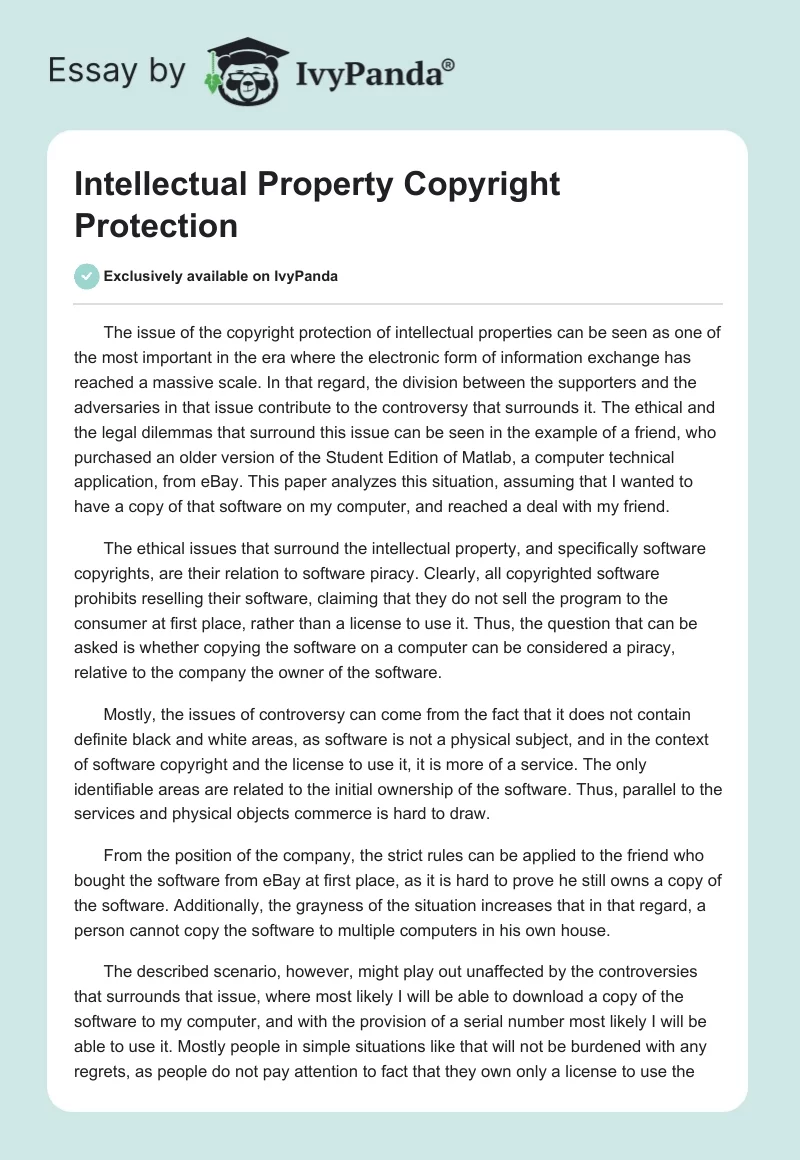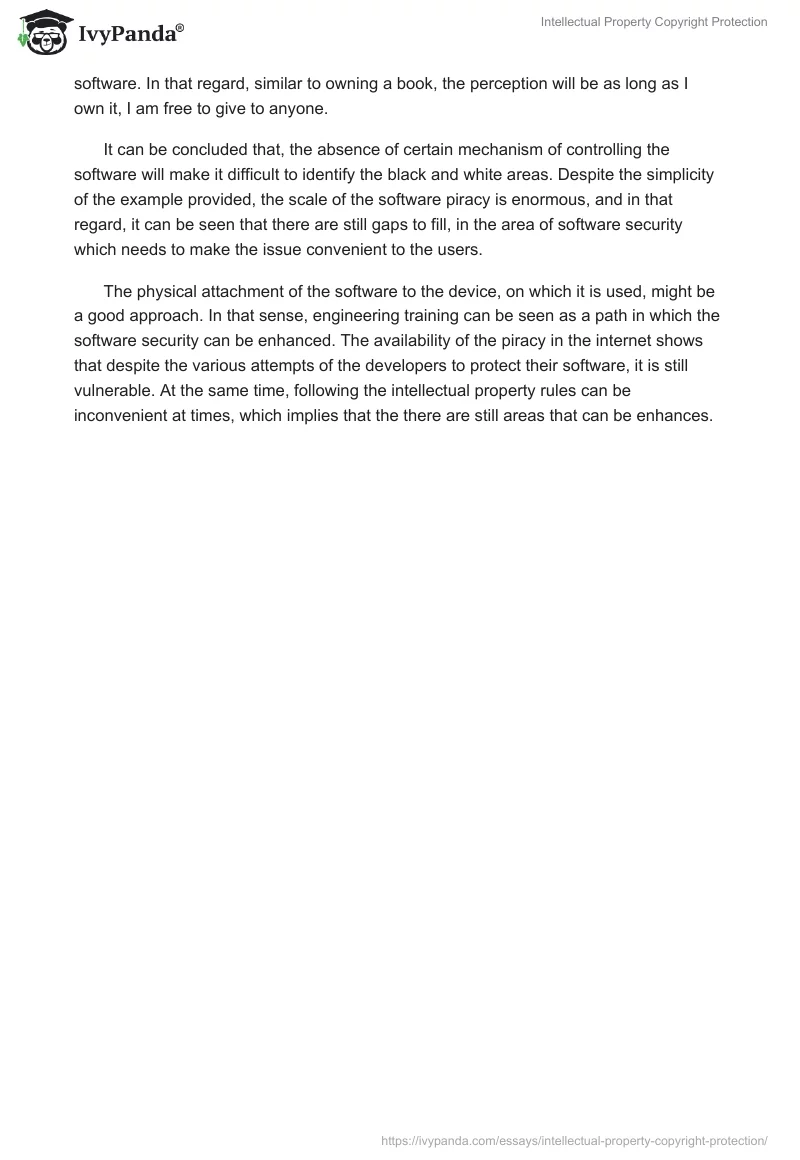The issue of the copyright protection of intellectual properties can be seen as one of the most important in the era where the electronic form of information exchange has reached a massive scale. In that regard, the division between the supporters and the adversaries in that issue contribute to the controversy that surrounds it. The ethical and the legal dilemmas that surround this issue can be seen in the example of a friend, who purchased an older version of the Student Edition of Matlab, a computer technical application, from eBay. This paper analyzes this situation, assuming that I wanted to have a copy of that software on my computer, and reached a deal with my friend.
The ethical issues that surround the intellectual property, and specifically software copyrights, are their relation to software piracy. Clearly, all copyrighted software prohibits reselling their software, claiming that they do not sell the program to the consumer at first place, rather than a license to use it. Thus, the question that can be asked is whether copying the software on a computer can be considered a piracy, relative to the company the owner of the software.
Mostly, the issues of controversy can come from the fact that it does not contain definite black and white areas, as software is not a physical subject, and in the context of software copyright and the license to use it, it is more of a service. The only identifiable areas are related to the initial ownership of the software. Thus, parallel to the services and physical objects commerce is hard to draw.
From the position of the company, the strict rules can be applied to the friend who bought the software from eBay at first place, as it is hard to prove he still owns a copy of the software. Additionally, the grayness of the situation increases that in that regard, a person cannot copy the software to multiple computers in his own house.
The described scenario, however, might play out unaffected by the controversies that surrounds that issue, where most likely I will be able to download a copy of the software to my computer, and with the provision of a serial number most likely I will be able to use it. Mostly people in simple situations like that will not be burdened with any regrets, as people do not pay attention to fact that they own only a license to use the software. In that regard, similar to owning a book, the perception will be as long as I own it, I am free to give to anyone.
It can be concluded that, the absence of certain mechanism of controlling the software will make it difficult to identify the black and white areas. Despite the simplicity of the example provided, the scale of the software piracy is enormous, and in that regard, it can be seen that there are still gaps to fill, in the area of software security which needs to make the issue convenient to the users.
The physical attachment of the software to the device, on which it is used, might be a good approach. In that sense, engineering training can be seen as a path in which the software security can be enhanced. The availability of the piracy in the internet shows that despite the various attempts of the developers to protect their software, it is still vulnerable. At the same time, following the intellectual property rules can be inconvenient at times, which implies that the there are still areas that can be enhances.


